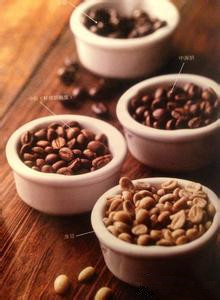Coffee cup test knowledge the aroma of coffee has exceeded 800 kinds.
The aroma of coffee itself is the main reason for the overall flavor properties, which is different from the perceived taste and sweetness, saltiness, bitterness and sour taste. Aroma is the most important product attribute of special coffee, and even instant coffee aroma substances can stimulate our taste buds. The difference is that instant coffee lacks the most important aromatic volatile components, which also leads to a reduction in overall flavor.

The fragrance can be felt by two different mechanisms. It can be felt by using the nose or returning to the snort. Nasal sensation occurs when coffee is present in the mouth or has been swallowed and the fragrant restorative substance floats up to the nasal cavity.
At present, more than 800 aroma substances have been found in coffee. With the improvement of the accuracy of analytical methods, more and more aroma substances will be found. The aroma of coffee is determined not only by the concentration of aroma substances but also by their threshold. A relatively small number of ingredients have high concentrations and low thresholds, and they also constitute the aroma of coffee that we perceive.
The aroma of coffee is largely determined by the roasting degree of coffee beans, and there are four main reactions in the roasting process:
Maillard reaction, which is a reaction between nitrogenous substances (amino acids, proteins and trigonelline, and serotonin) and carbohydrates (sugars).
Degradation of individual amino acids, especially thionine, hydroxyl and proline.
The degradation of sugar leads to caramelization.
Carbolic acid degradation, especially quinic acid semi-group.
Other reactions are related to lipid degradation, and there are hundreds of interactions between intermediate decomposition products.
Important Notice :
前街咖啡 FrontStreet Coffee has moved to new addredd:
FrontStreet Coffee Address: 315,Donghua East Road,GuangZhou
Tel:020 38364473
- Prev

Fancy coffee brewing skills Coffee ingredients
The general principle of coffee in a meal is similar to that of wine, that is, strong coffee matches strong food; on the contrary, lighter coffee matches lighter food. Generally speaking, in western food, it is inevitable to eat some desserts, such as cloth, after dinner
- Next

Analysis of acid components in boutique coffee knowledge coffee
The acidity of coffee is usually considered to be related to the quality of coffee. Acidity is typical of high-value coffee in Central America and East Africa. Excessive sour taste is considered to be the disadvantage of coffee. Acidity is related to growing at very high altitudes and mineral-rich volcanic soils. The acidity of washed beans is higher than that of sun-dried beans. For example, the concentration of sun-dried beans is heavier than that of washed beans, because the concentration obscures the acid of coffee.
Related
- Beginners will see the "Coffee pull flower" guide!
- What is the difference between ice blog purified milk and ordinary milk coffee?
- Why is the Philippines the largest producer of crops in Liberia?
- For coffee extraction, should the fine powder be retained?
- How does extracted espresso fill pressed powder? How much strength does it take to press the powder?
- How to make jasmine cold extract coffee? Is the jasmine + latte good?
- Will this little toy really make the coffee taste better? How does Lily Drip affect coffee extraction?
- Will the action of slapping the filter cup also affect coffee extraction?
- What's the difference between powder-to-water ratio and powder-to-liquid ratio?
- What is the Ethiopian local species? What does it have to do with Heirloom native species?

